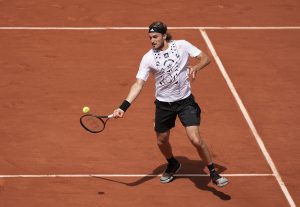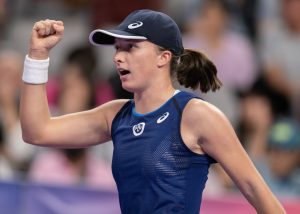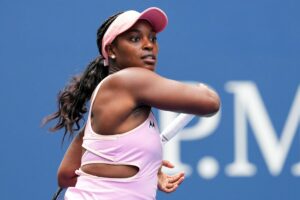The Wimbledon men’s final between Novak Djokovic and Nick Kyrgios is a battle of the generations.
Now, recently in men’s tennis there is the “fad” of describing a group of players into a generation or “Gen”. So, players born between 1990 and 1996 have no specific label but often harshly called “Lost Gen”. That group of players include Grigor Dimitrov, David Goffin, Dominic Thiem, Nick Kyrgios, Matteo Berrettini. Then we have the “Next Gen”. Born primarily between 1997 and 2001 they include Daniil Medvedev, Alexander Zverev, Stefanos Tsitsipas, Dennis Shapovalov, Andrey Rublev and Casper Ruud. And now, we have “Generation X” born in the millennium including Carlos Alcaraz, Jannik Sinner, Felix Auger Aliassime and Lorenzo Musetti.
That is three generations of players who are currently and have been challenging the established order of Novak Djokovic, Rafael Nadal and Roger Federer. Unsuccessfully. Federer is completely off the radar and unlikely to play tennis at the top level going forward. But that still leaves Nadal and Djokovic. And just as they did in the 2010s, they have started this decade in dominant fashion. In 2020, Djokovic won the Australian Open and Nadal won the French Open. In 2021, Djokovic won the Australian Open, French Open and Wimbledon. And so far in 2022, Nadal has won the Australian Open and French Open.
With Wimbledon 2020 cancelled due to the Covid-19 pandemic, this means that out of nine major tournaments played, Djokovic and Nadal have won seven of them. Dominic Thiem won the US Open in 2020 (with the aid of Djokovic’s disqualification for hitting a lines person). And in 2021 Medvedev surprisingly beat Djokovic in straight sets to win the US Open with the Serb seemingly overcome by the weight of the occasion.
This dominance is surprising considering Djokovic is now 35 and Nadal is 36. Ages that in the past would have seen them retired or at least lower down the rankings. For whatever reason, the opposition in the guise of three generations of players, are unable to make a dent into their domination.
The last twelve months have been a painful period for tennis fans wanting to see a changing of the guard. Not just the fact that these two players keep winning, but the manner of victories is causing alarm. There are some key examples.
Starting off with the fourth round of the 2021 French Open. Musetti played Djokovic and ran into a two sets lead playing superb tennis. Musetti won two tiebreakers but proceeded to fall off the pace in the most spectacular fashion, losing the next two sets 6-1 6-0. The fifth set didn’t fear much better, Musetti retiring 4-0 down.
A similar scenario played out in the final of the same tournament. Tsitsipas who himself has been fighting demons looked as if his moment had finally arrived. After seeing off Zverev in a five-set semifinal, Tsitsipas raced into a two set lead with the crowd completely energised to see a new champion. After losing the second set 6-2 Djokovic went for a bathroom break and came back out to claim the next three sets with relative ease to take the title. Tsitsipas has not been the same player since.
Fast forward to the 2022 Australian Open and with Djokovic unable to compete, it was Nadal’s turn to show the collective younger gen how to do it. In the quarterfinal Nadal faced Shapovalov and went two sets up. Shapovalov won the next two sets to force a deciding set. Convention would suggest that the player who won the third and fourth sets would have the momentum, but it was not the case with Nadal coming back to take the fifth set 6-3.
In the final Nadal faced Medvedev, finally a Major champion and pushing hard for the Number 1 ranking. Medvedev took the first two sets and looked to be in a good position to make it two Majors in a row. Nadal had other ideas, however, and with his characteristic never say die attitude and ability to drag matches on for much longer than opponents would like, Nadal took the next three sets in a match which lasted five hours! In the end Medvedev, 11 years Nadal’s junior was completely exhausted and almost begging for mercy.
At the French Open, Nadal faced Alexander Zverev in the semifinal having beaten Djokovic in gruelling fashion in the quarters. Zverev, in his own quarterfinal, had finally won a match against a top 10 opponent at a Grand Slam. After 11 attempts! Zverev Zverev took a quick lead but handed it back in ludicrous fashion. The German had easy mid-court shots to put away but too often launched the ball straight into the back fence instead.
The match took place indoors with the clay playing extremely slowly and heavily. That favoured Zverev, but he did not adapt to the conditions as effectively as he might have, with the German planting his feet when he needed to be much more nimble. The first set eventually went to a tiebreak which Zverev lost 10-8. In the second set tiebreak, Zverev sustained an incredibly bad ankle injury and had to retire. Amazingly two uncompleted sets of tennis took 2 hours and 45 minutes, which on the face of it sounds ridiculous.
But if that was another exhausting encounter, Nadal’s reward for winning it was to play Casper Ruud in the final. That was a much more favourable matchup and was played in much better conditions for the Spaniard. He took advantage, winning it in double quick time.
At Wimbledon, meanwhile, Djokovic faced Jannik Sinner in the quarterfinal, who looked incredibly good against Alcaraz in the fourth round. Sinner took a commanding two sets lead, even taking the second set 6-2. At which point Djokovic went to the bathroom and gave himself his customary “pep talk”. This led to the inevitable comeback, where Sinner went from looking good for the win to making strange errors and not showing much fight. The next day Nadal came back to win the fourth and fifth against Taylor Fritz when it was clear he could barely serve. Great victories for Djokovic and Nadal but disconcerting how their opponents succumbed from winning positions.
What is causing this collective failure by these players against Nadal and Djokovic? How can it be overcome?
Waiting for the two protagonists to go into retirement is not an option. Both players will keep playing as long as their body holds up, even if they go into their 40s. With Nadal’s chronic injuries that may be a bit more unlikely. However, the sport will surely suffer if the younger players are unable take on Nadal and Djokovic and beat them fair and square.
It can be done, but on too many occasions young players have put themselves into a commanding position, only to fold like a cheap tent (as the saying goes). The collective of players need to find something within them where they refuse to lose, and show Djokovic and Nadal this face. Until they find this inner fortitude, we will continue to get disappointing results from these players at critical moments. Tennis needs renewal and fresh blood to win at the highest level. There are really no more excuses; these players need to step up before their reputations take a terminal dive.
Main photo:
Embed from Getty Images






